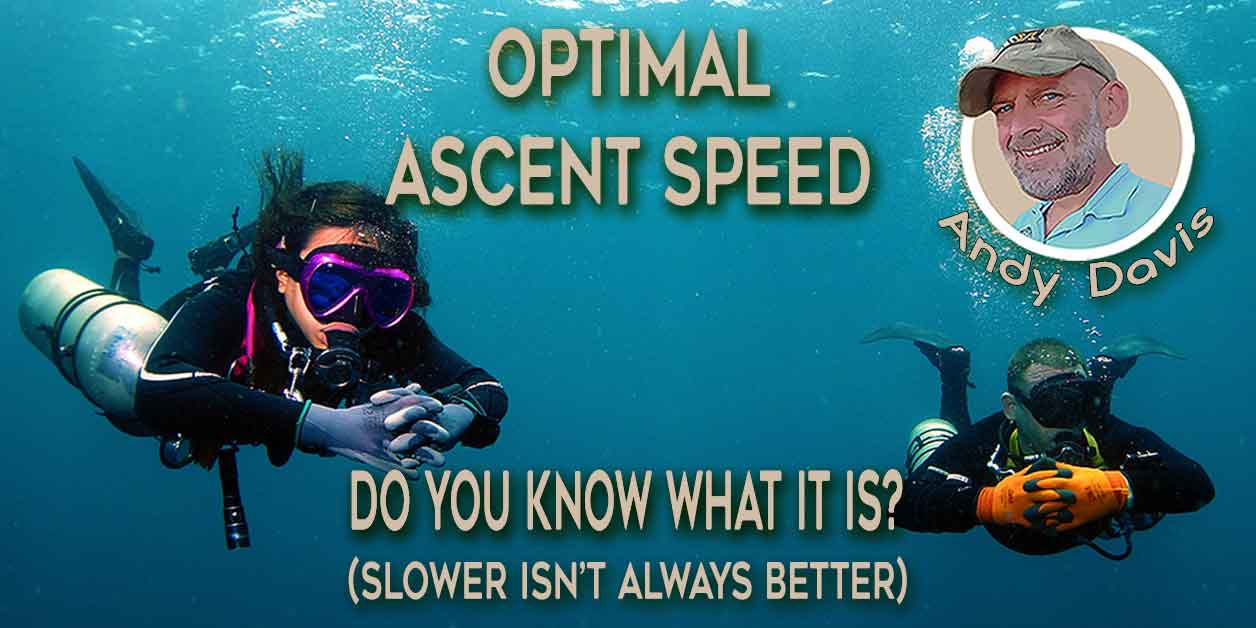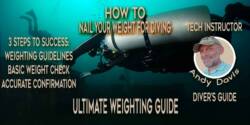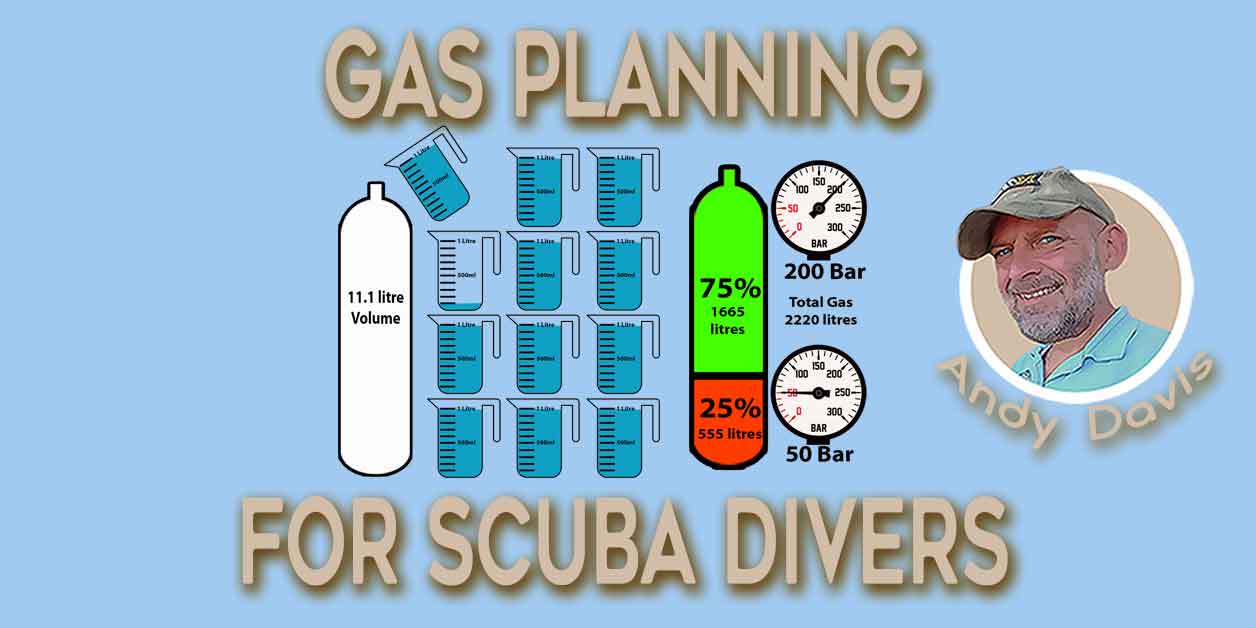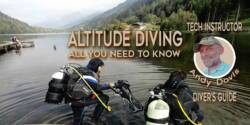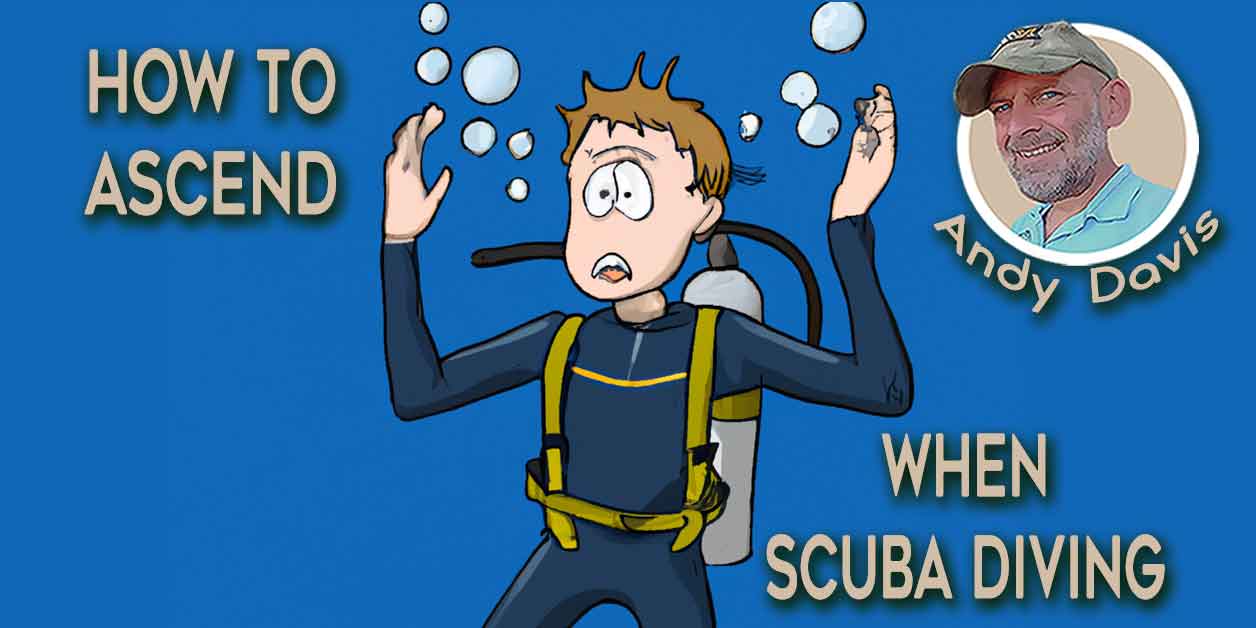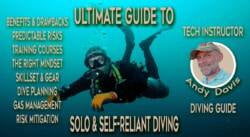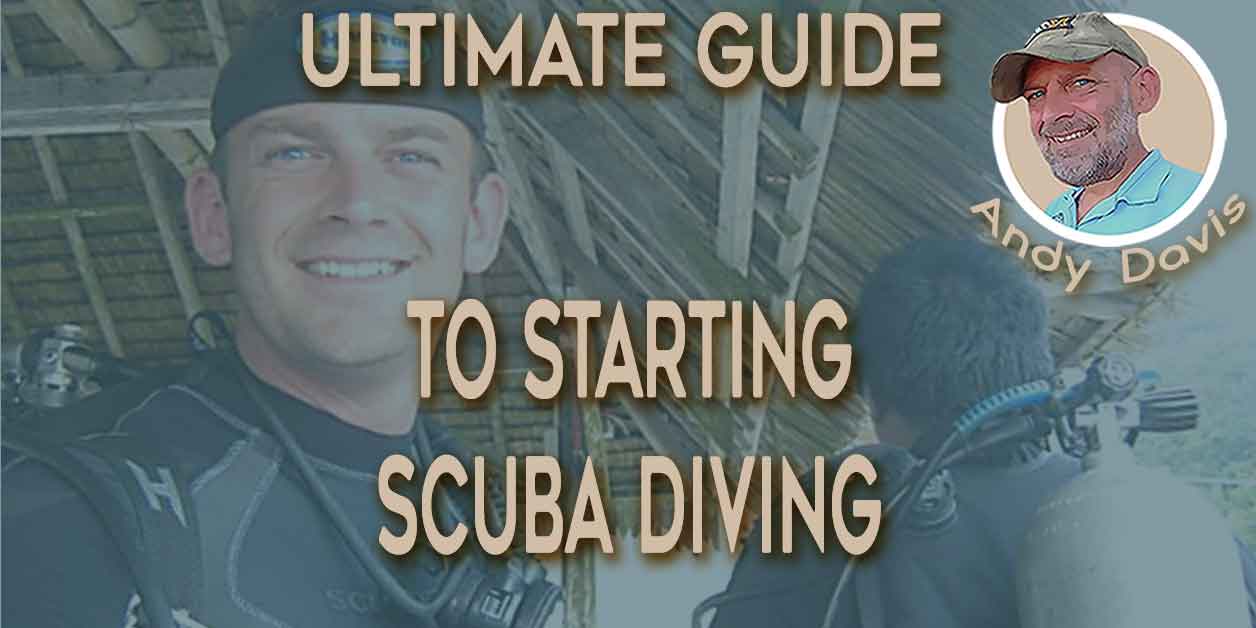Mastering Horizontal Diving Trim: An Effortless Balancing Act
Horizontal diver trim is the foundation of good buoyancy control and efficient propulsion. Whenever we use our fins for propulsion in the water, we create directional thrust.
If our body is not horizontally trimmed (‘flat’) in the water, then we will be accidentally directing that thrust at an angle (upwards or downwards) that will interfere with our scuba buoyancy.
The trim of a diver is the orientation of the body in the water, determined by posture and the distribution of weight and volume along the body and equipment, as well as by any other forces acting on the diver.
Wikipedia
Why is horizontal diver trim important for buoyancy control?
Achieving horizontal diver trim in the water makes our propulsion more effective: all our thrust goes into covering distance and does not cause buoyancy problems.
Being flat/horizontal also prevents any water movement (either current upon our body, or our body moving through the water) from pushing us vertically in the water column.
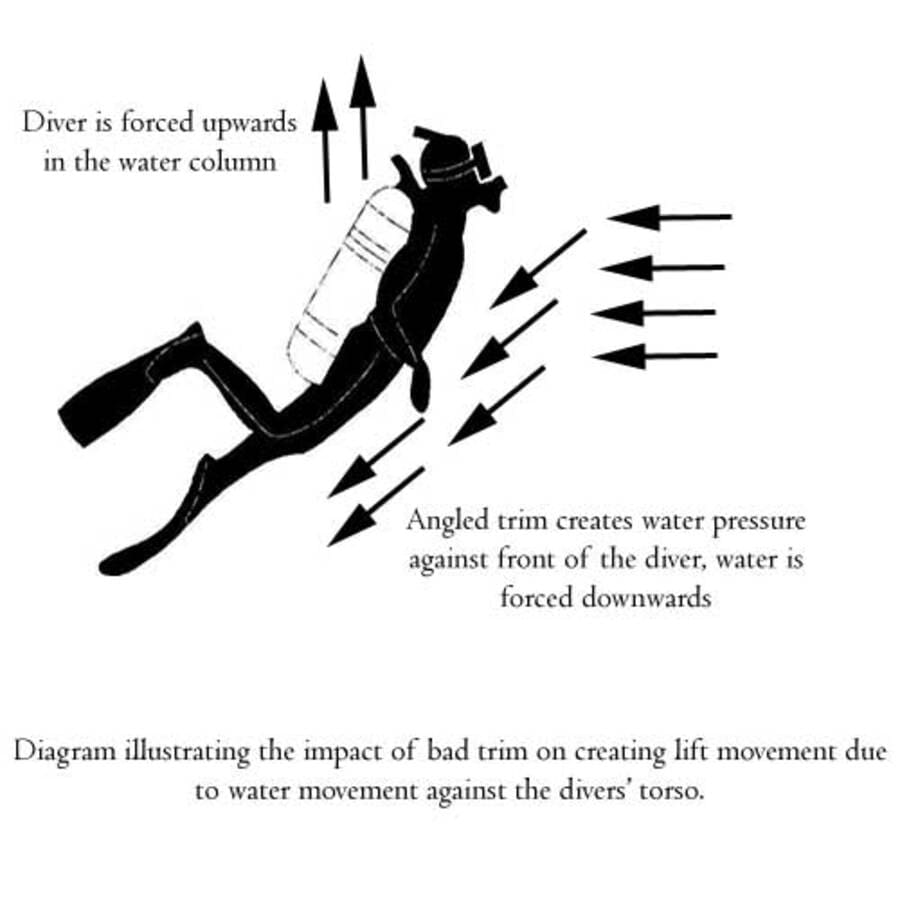
For an exaggerated demonstration of this factor, simply stick your hand out of a car window when driving. You can hold your hand still if it is flat. If you angle your hand upwards, the airflow will force it upwards.
For a diver who is in a bad, head-up/feet-down trim position, the effect of simply moving through the water will subtly force them upwards. When added to the directional (downwards) thrust from fining in that position, it will give the false impression of having more buoyancy than they actually have.
This is why many divers can maintain a constant depth whilst fining but then find themselves sinking (negatively buoyant) when they try and maintain a static position without fining.
Many divers with poor buoyancy control will instinctively compensate for this lack of control by adopting a head-up/feet-down trim position.
This is a very short-sighted solution, as any buoyancy problems will become immediately apparent when the diver stops moving (i.e. on a safety stop, to take a photo, or when having to deal with a problem).
A diver should not underestimate the amount of negative buoyancy that can be offset by fining in a feet-down attitude.
How does weighting affect horizontal diver trim?
The first step towards achieving a flat horizontal trim is to ensure that you are not over-weighted. As mentioned earlier, this creates a push-pull effect across the divers’ horizontal center of gravity (COG).
It is caused because weights are located on the torso below the COG, whereas the air that compensates for those weights is located above the COG. The torso rises and the legs lower. An over-weighted diver exaggerates that effect (more weight = more air to compensate).
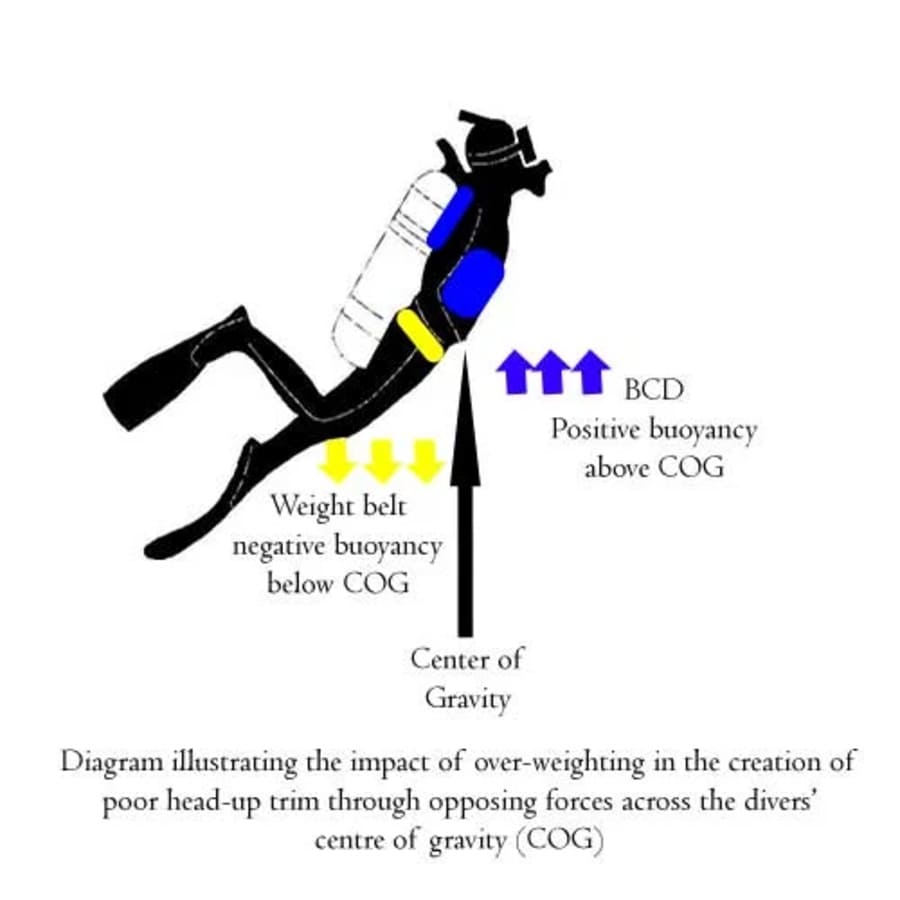
What is good diving trim?
For optimal diver trim, the shoulders, hips, and knees should be flat horizontally.
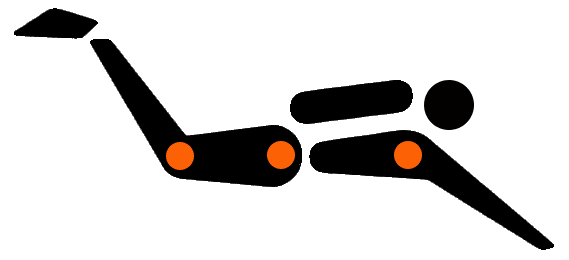
The most common mistake that divers make with their trim is to drop their knees. This bad habit can become ingrained because some diving instructors teach their students to kneel when doing skills or go into a vertical position whenever they descend, ascend, or conduct safety stops.
Practicing buoyancy in the infamous “Buddha position” can also ingrain terrible habits that are counter-productive to achieving natural trim.
There are three common trim problems that divers experience.
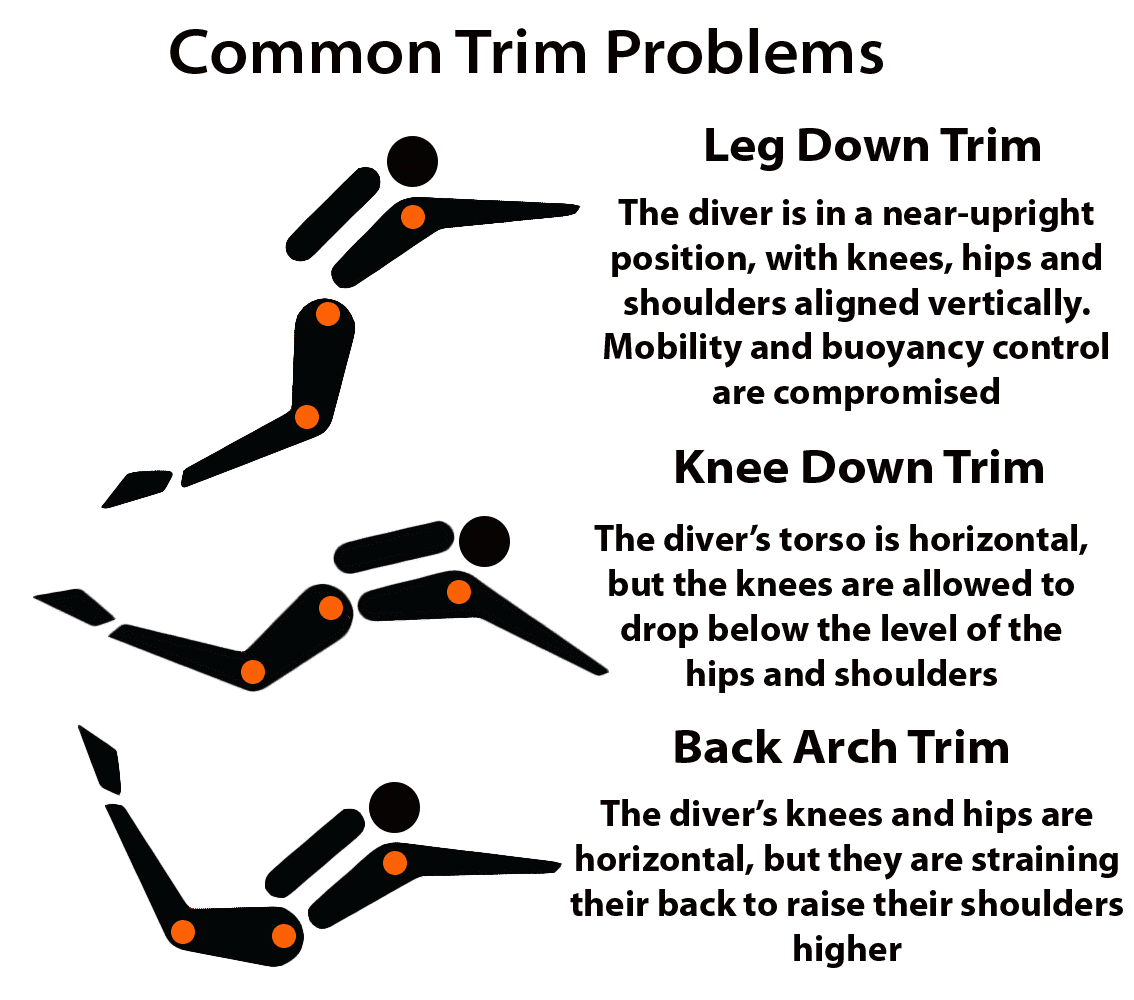
To achieve the right body posture for holding stable trim, the secret is to keep your buttocks slightly clenched. This has the remarkable effect of locking your hips forwards; keeping your shoulders, hips, and knees in horizontal alignment.
Practicing to improve horizontal diver trim
The second step for achieving a flat horizontal trim is simply to find time for deliberate practice maintaining a static hover.
The diver should aim to hold themselves in a position similar to that used by a freefall parachutist;
- Shoulders, hips, and knees at an equal level
- A straight spine
- The hands clasped to prevent sculling
- The legs and head raised
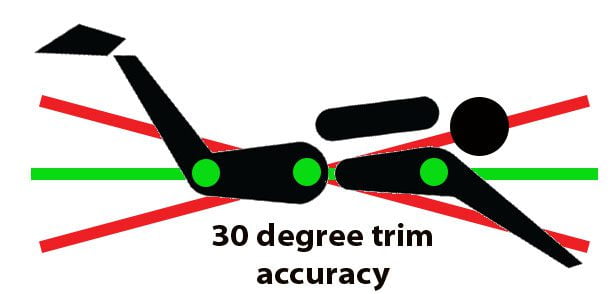
- As the diver attempts to hold this static hover they will swiftly notice whether their equipment is causing any misbalance.
- Having identified any tenancies to float in a non-horizontal manner, the diver can then seek to re-adjust the configuration of their equipment to mitigate this effect.
- Working with a partner/observer who can give feedback on your trim practice is always beneficial.
The serious practice of trim (along with other skills, such as fin techniques) can very much benefit from the use of a video camera to record and assess your technique.
Adjusting horizontal diver trim
The diver can use ‘trim weights’ to resolve major problems in their hover.
- These are small weights that can be attached to the cylinder cam bands, the BCD or the ankles.
- They can also experiment with the location of their diving cylinder on the BCD; raising or lowering the cylinder to shift their COG upwards or downwards along their torso.
- More fine-tuning can be achieved through the consideration of specific items of diving equipment.
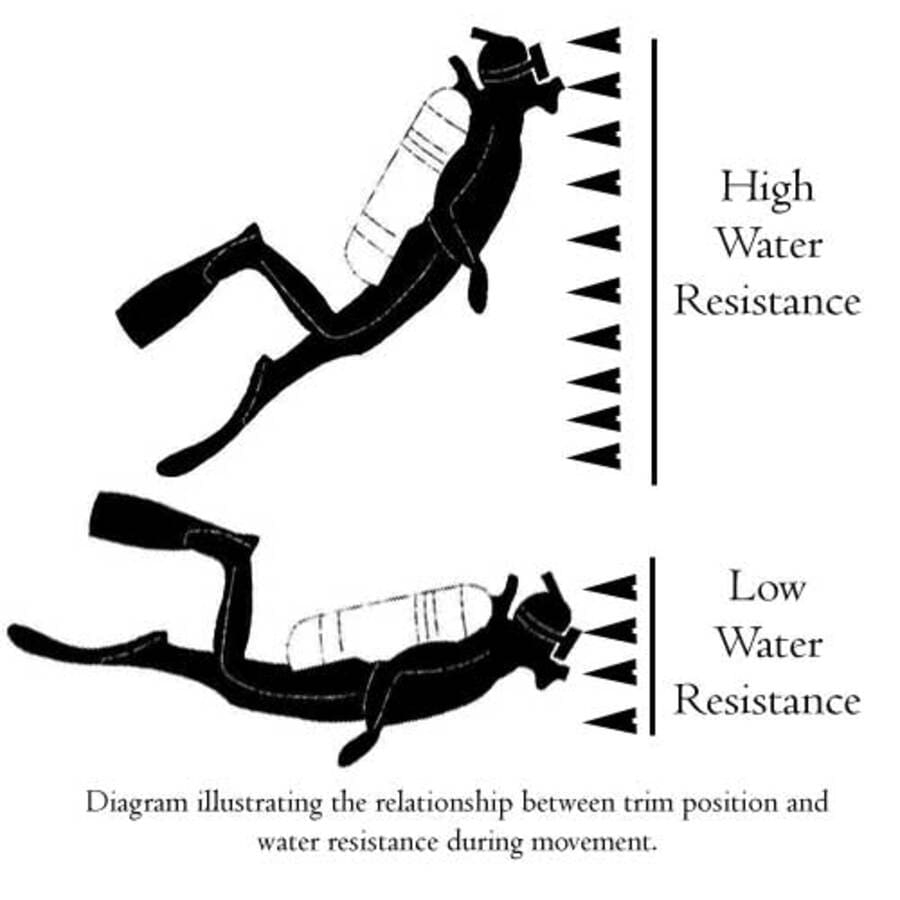
Most notably, the choice of either positive or negatively buoyant fins can play a beneficial role in trimming.
For very fine-tuning of trim, the diver should also be aware of their arm positioning during the dive. Extending the arms forward in front of the diver can help to bring the upper torso lower. Holding the arms closer to the torso will negate this effect.
About The Author

Andy Davis is a RAID, PADI TecRec, ANDI, BSAC, and SSI-qualified independent technical diving instructor who specializes in teaching sidemount, trimix, and advanced wreck diving courses.
Currently residing in Subic Bay, Philippines; he has amassed more than 10,000 open-circuit and CCR dives over three decades of challenging diving across the globe.
Andy has published numerous diving magazine articles and designed advanced certification courses for several dive training agencies, He regularly tests and reviews new dive gear for scuba equipment manufacturers. Andy is currently writing a series of advanced diving books and creating a range of tech diving clothing and accessories.
Prior to becoming a professional technical diving educator in 2006, Andy was a commissioned officer in the Royal Air Force and has served in Iraq, Afghanistan, Belize, and Cyprus.
In 2023, Andy was named in the “Who’s Who of Sidemount” list by GUE InDepth Magazine.
Purchase my exclusive diving ebooks!
Originally posted 2011-07-13 13:32:52.









